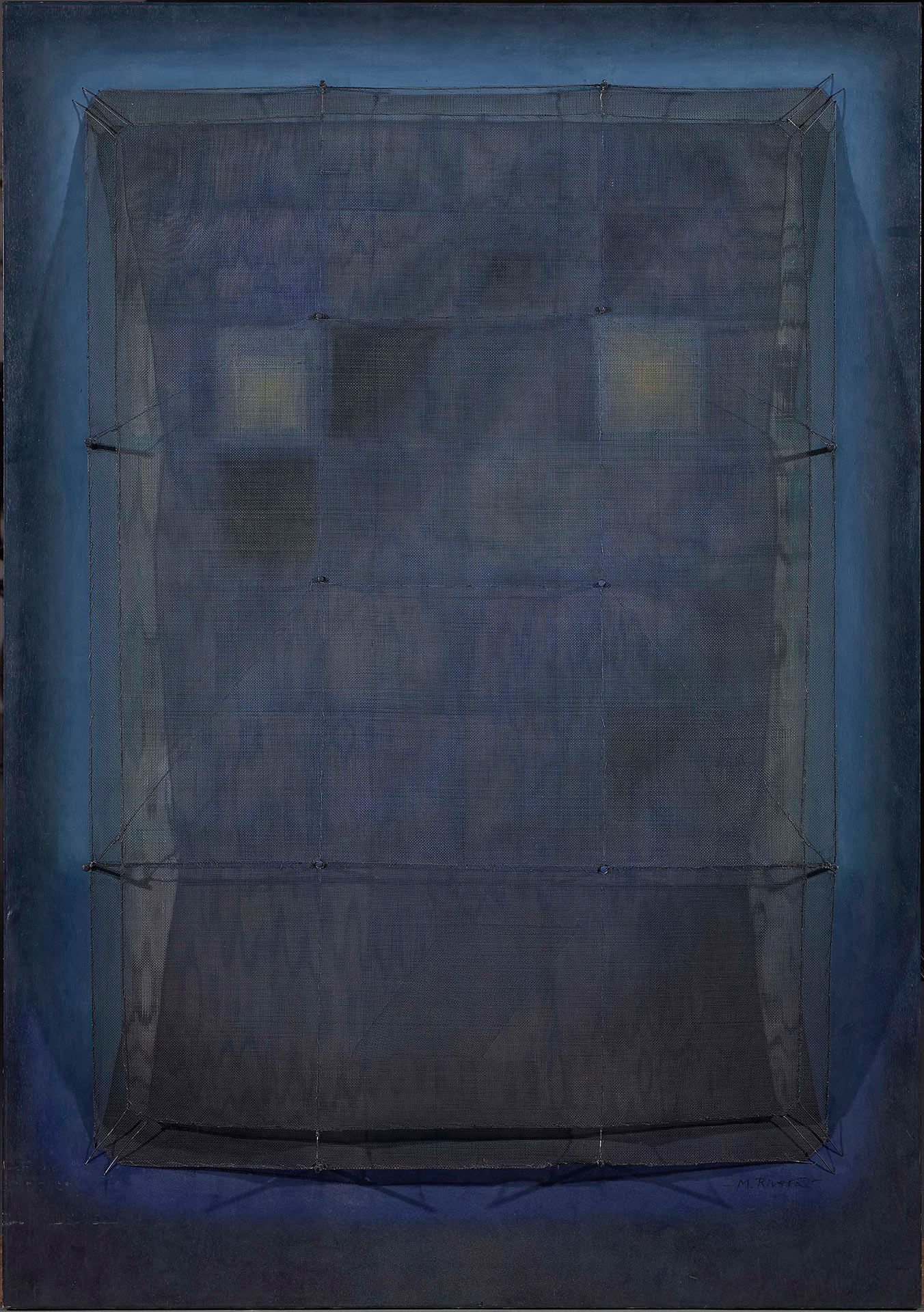
Manuel Rivera (Granada, 1927 – Madrid, 1995)
Pond in the El Partal Gardens
1969
WORK INFORMATION
Mixed media and polychromed metallic fabric on panel, 162 x 114 cm
OTHER INFORMATION
Signed in the lower right-hand corner: "Manuel Rivera". Inscription on the reverse: "Manuel Rivera / Estanque del Partal, 1969 / M. Rivera"
Manuel Rivera received an academic education, first in Granada and later at the Seville School of Fine Arts, where he qualified as a drawing teacher. In 1951 he moved to Madrid, and in 1955, like all young avant-garde Spaniards, he made the obligatory trip to Paris, where he discovered the revitalising innovations of abstract Art Informel. What interested him most about this tendency was the emphasis on new experiences and the plastic value of new materials. Back in Spain, he began to experiment with the spatial concept of the picture and the use of new materials.
In 1957 Rivera and a number of other artists founded the El Paso group. The members of this group shared a strong leaning towards expressivity, in both abstraction (Canogar, Feito, Millares, Viola, Suárez, Juana Francés) and figuration (Saura). However, the only thing Rivera had in common with the El Paso painters was his connection to abstraction and the investigation of possibilities. While Millares used hessian as both support and material for a ragged expressivity, Rivera resorted to the interplay of superimposed metallic fabrics anchored to a support. With them he created works that achieve an infinite number of unrepeatable, luminous chromatic variations.
Estanque del Partal [Pond in the El Partal Gardens] illustrates this dynamic effect. Colour and light function as elusive, fleeting elements in constant transformation, synchronised with changes in light and the slightest movement of the viewer. Espejo para un oráculo n.º 3 [Mirror for an Oracle no. 3] accentuates this iridescent effect, mimicking the rippled sheen of metallic moiré.
In his works, Rivera combines the subtle, shifting interference of light and colour with the prominent presence of the material and the mesh of elements that anchor it to the support, as we see in Espejo-mandala III [Mirror-Mandala III]. The artist takes the conventional format of a picture and turns it into a dynamic object by using the materials to create optical illusions.
In comparison with the expressive tendencies of his companions in El Paso, Rivera's work is marked by a visual expressivity based on a rational control of the picture's components. His compositions, as we see in Transmutación [Transmutation] and Mutación [Mutation], are articulated by the geometry of the structure, conceding a poetics of reflection to expressivity. The reflection is light and colour in his works—an element which, like water, is altered by the effects of light, creating an image that can never be repeated, changing with each passing moment and with the spectator's movements. [Víctor Nieto Alcaide]

